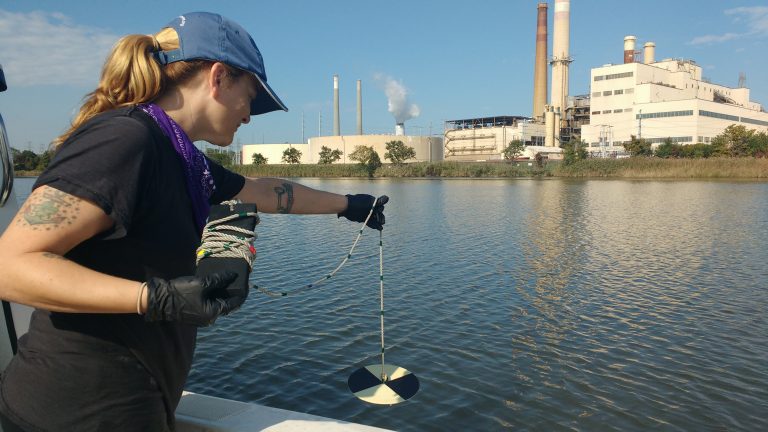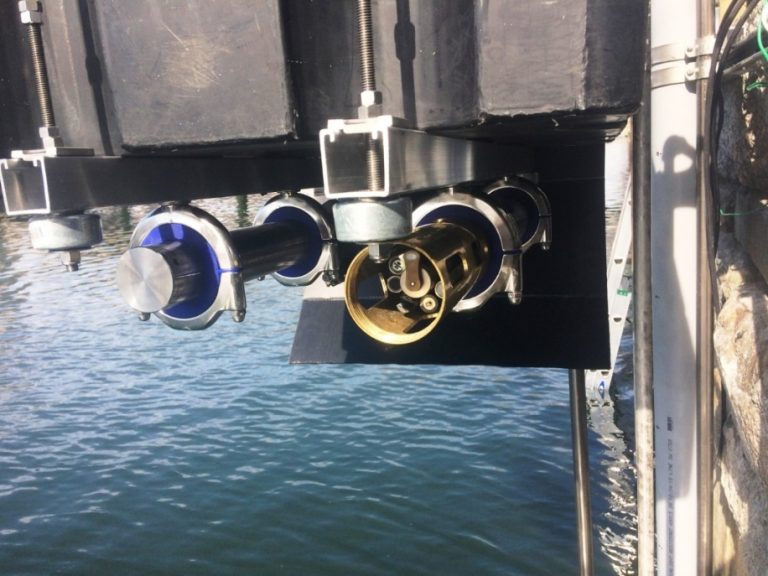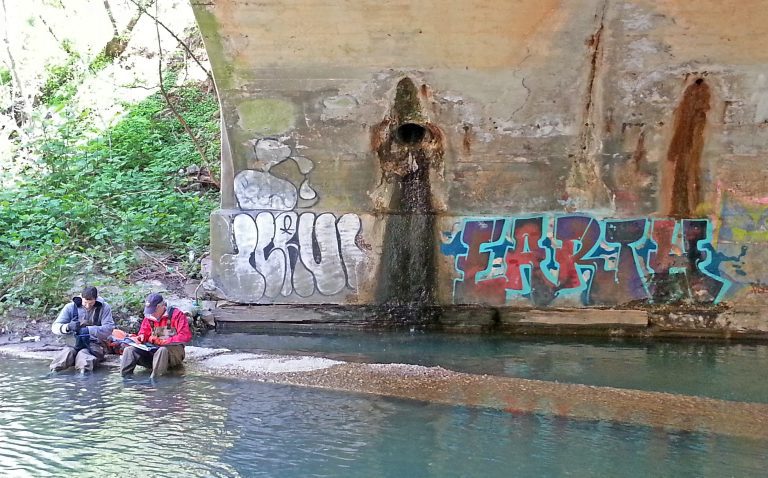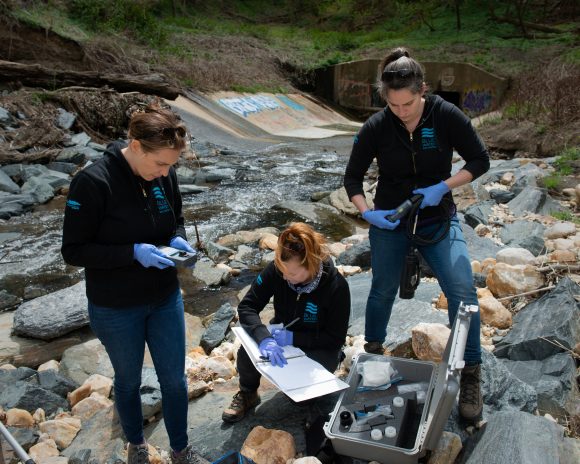Our Living Waterways
Words and photos by Cody Matteson
Have you ever wondered what gives the water a certain color? Oftentimes, the answer is algae!
Our waterways are alive with microorganisms, and to better understand the ecosystem, we must understand these tiny life forms.

In the Baltimore Harbor, the water during summer months is often a brownish color. The cause of this is an algal bloom that creates a phenomenon called a mahogany tide. The algae that cause this is a dinoflagellate called Prorocentrum minimum. These algae can potentially be harmful to biological life, but the largescale problem begins after the algae’s life cycle. Once the algal bloom dies, the cells sink to the bottom of the water body where they are decomposed by bacteria. These bacteria respire or breathe and use up the oxygen in the water column, causing what we know as dead zones where fish and other aquatic organisms cannot survive.

Another water color change Blue Water Baltimore scientists noticed was a greenish hue in the harbor water–a Pistachio Tide. The greenish color of a pistachio tide appears when surface water cools and sinks, bringing water at the bottom, or benthic zone, to the surface. Photosynthesizing bacteria are brought to the surface with the water and produce the green color when reacting with sunlight. Because the bacteria perform photosynthesis without oxygen, due to the low levels of dissolved oxygen at the bottom of the harbor, the dissolved oxygen in the water column remains very low, and the byproduct of hydrogen sulfide causes a “rotten egg” smell. Similar smells exist in wetland areas, or if you’ve ever smelled a natural gas leak, a similar rotten egg odor is added to odorless natural gas to give it a noticeable smell.
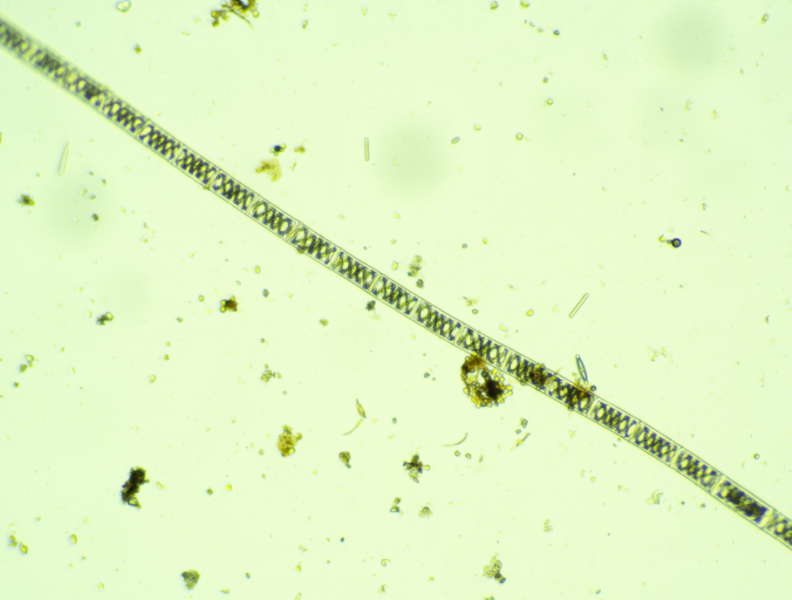
A growing issue in the Chesapeake Bay watershed is HABs or Harmful Algal Blooms, an important algae to know is called Blue-Green Algae or Cyanobacteria. An example of a Cyanobacteria is Spirogyra pictured here under a microscope. We often see these algal blooms in the form of green stringy mats in warm, nutrient filled water, though without identification under a microscope can also look a lot like non-toxic filamentous green algae. Ingestion of a HAB by humans or animals can result in poisoning, so it’s best to use caution when recreating in water with green stringy algae.
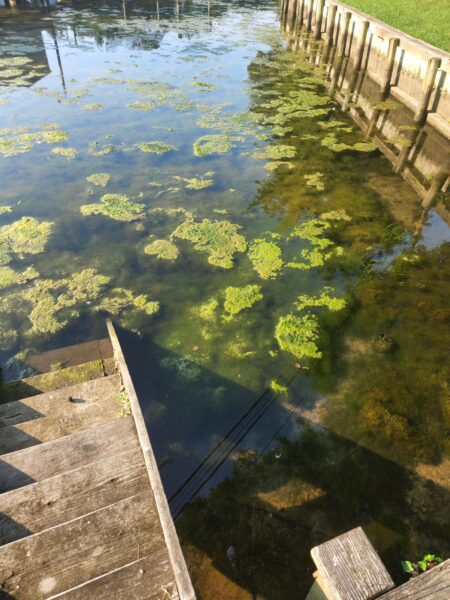
Not only have poisonings been documented from Cyanobacteria, issues in animals going through trophic levels after ingesting Cyanobacteria continues to be studied.
Further research into the microorganisms in our local waterways goes a long way in better understanding the ecosystem of our local streams. Blue Water Baltimore has taken a few algae samples from some of our field stations where we regularly sample water quality. In the Stony Run we’ve found all sorts of algae including diatoms such as Pinnularia, Navicula, and Synedra; and at our Powder Mill Run station we found the filamentous green algae Cladaphora dominating the stream bed, with a whole ecosystem of diatoms and phytoplankton.

If you want to know more, drop us an email, or follow Blue Water Baltimore’s social media pages for weekly updates on water quality and the ecosystems it supports.

References:
- Wilde SB, Murphy TM, Hope CP, et al (2005) Avian Vacuolar Myelinopathy Linked to Exotic Aquatic Plants and a Novel Cyanobacterial Species. Environmental Toxicology 20:348–353. doi: 10.1002/tox.20111
- (2021) Blooms in Baltimore’s Harbor. National Aquarium Blog. https://aqua.org/stories/2021-10-08-blooms-in-baltimores-harbor.
- (2018) This Month on the Bay: A Mahogany Tide in May. Chesapeake Bay Foundation Blog. https://www.cbf.org/blogs/save-the-bay/2018/05/this-month-on-the-bay-mahogany-tide.html#:~:text=The%20critter%20in%20question%20is,cells%20per%20liter%20of%20water


